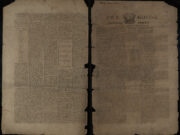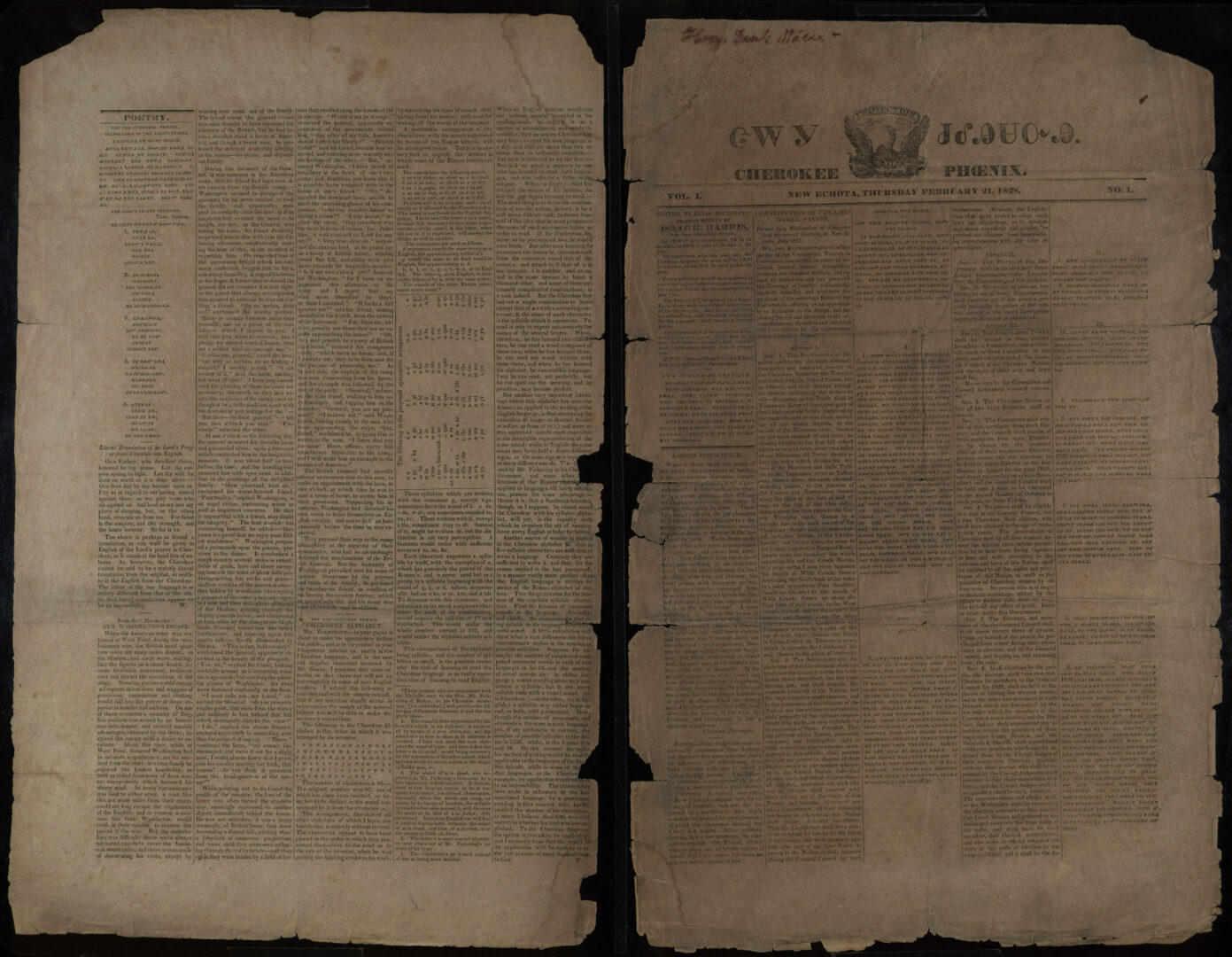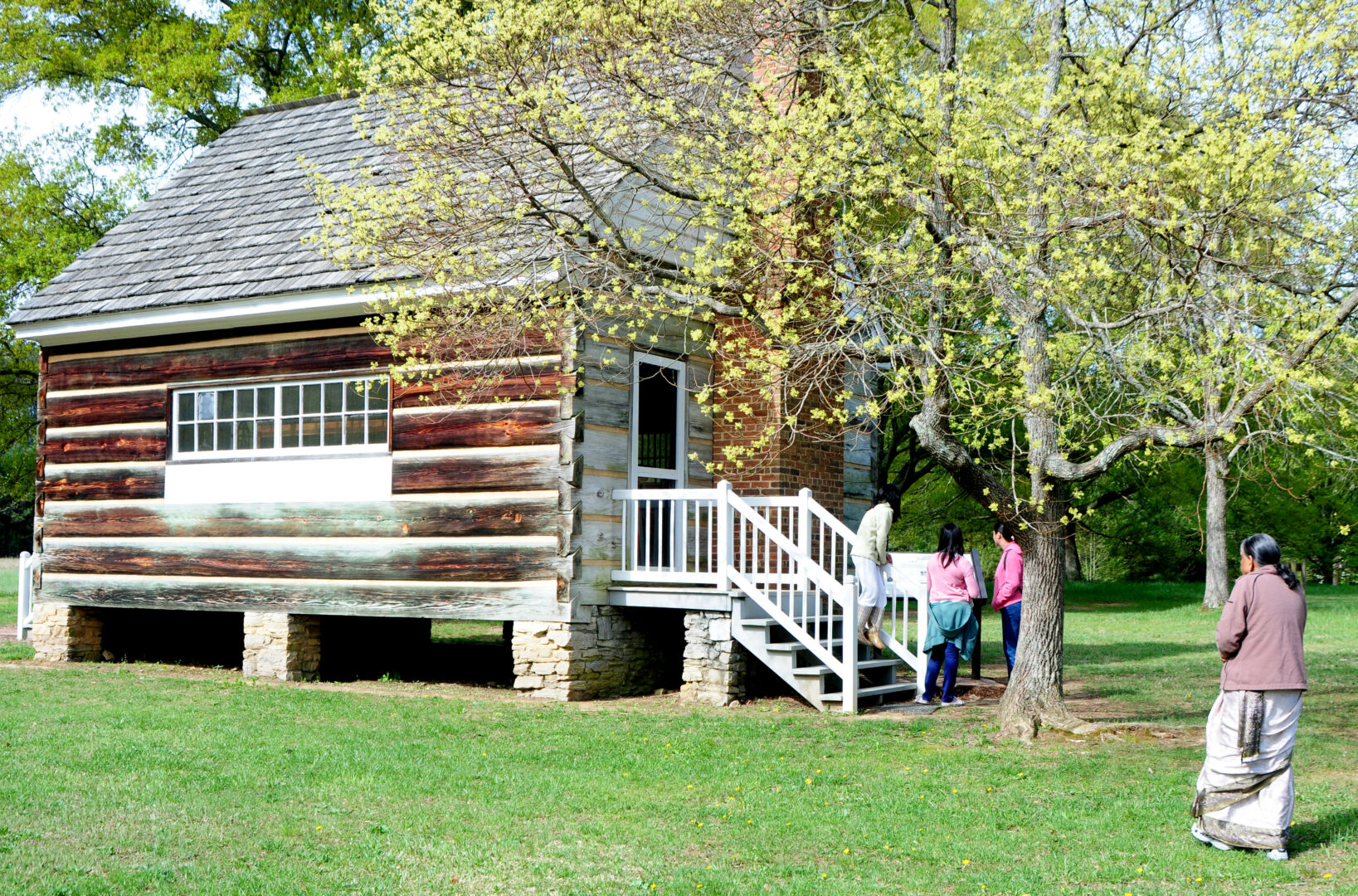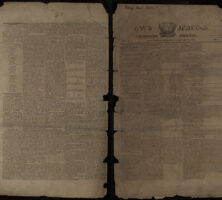The Cherokee Phoenix, the first Native American newspaper in the United States, was first printed in 1828 in New Echota, Georgia, the capital of the Cherokee Nation. The Phoenix was published weekly with adjacent columns of English and Cherokee text. The General Council of the Cherokee Nation, in collaboration with the Reverend Samuel Worcester of the American Board of Commissioners for Foreign Missions, established a printing office at New Echota in 1828 and offered the position of editor to a formally educated Cherokee named Elias Boudinot. In the previous decades the Cherokee Nation had abolished blood revenge practices, established a bicameral council, enacted a written constitution, and developed a Cherokee writing system, or syllabary. The Cherokee Phoenix represented a milestone in the continuing transformation of the Cherokee Nation.
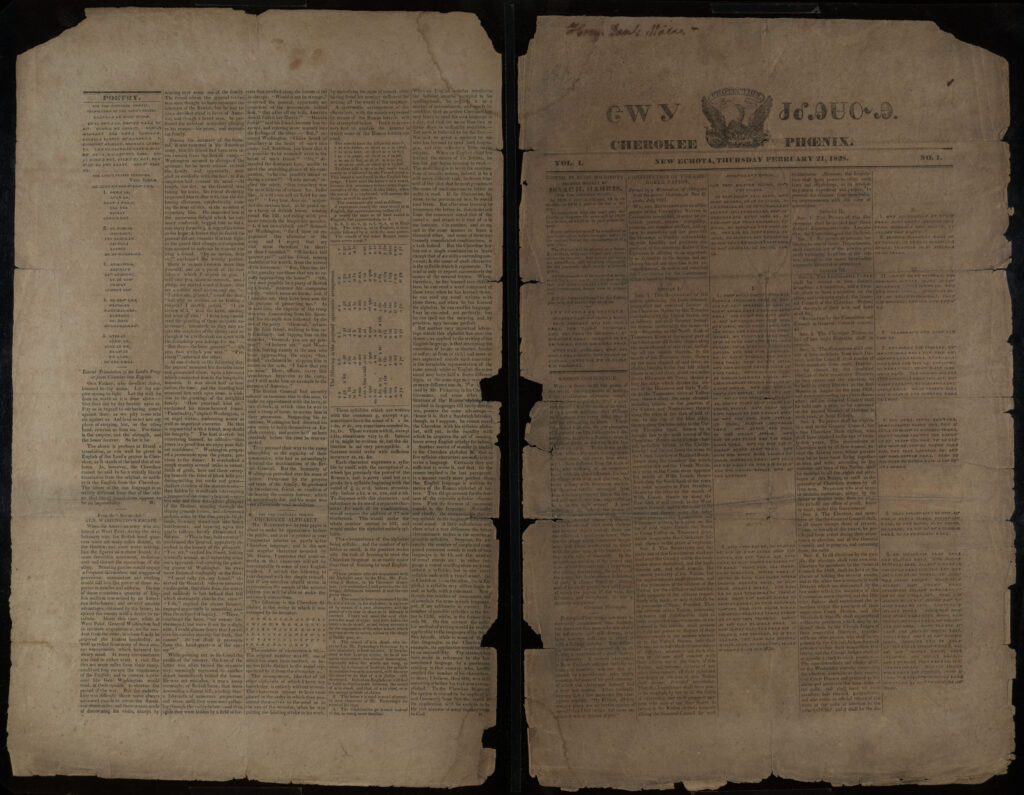
Courtesy of Hargrett Rare Book and Manuscript Library, University of Georgia Libraries.
In the mid-1820s the Cherokee Nation was under pressure from the surrounding states, primarily Georgia, to either relinquish their sovereignty or move to a territory west of the Mississippi River. The General Council established the Cherokee Phoenix newspaper as a tool for eliciting widespread public support and for keeping the Cherokee Nation united and informed during this crisis. As a result of a fund-raising and publicity tour, the Phoenix attracted subscribers in nearly all parts of the United States and in Europe.
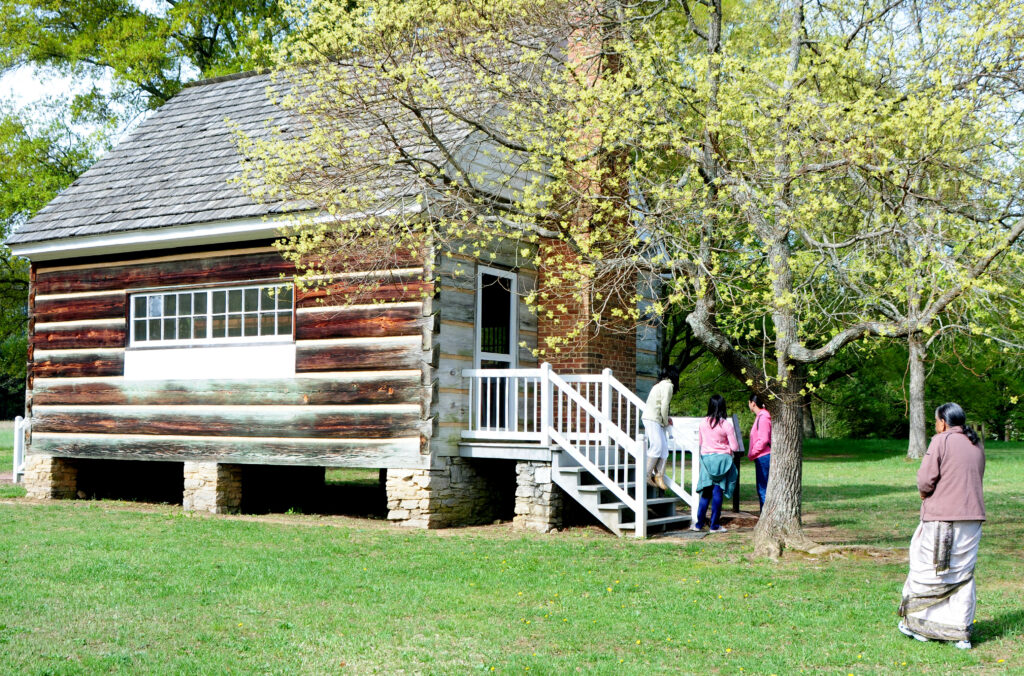
Image from George Puvvada
The first issue of the Cherokee Phoenix was published on February 21, 1828. Boudinot issued a detailed prospectus for the paper in October 1827. In it he pledged to print the official laws and documents of the Cherokee Nation, local and international news items, columns on the Cherokees’ progress in the “arts of civilized life,” and tracts on temperance and Christian living. Short works of fiction and columns reprinted from other newspapers also appeared routinely. For the first time, Cherokees were able to read the news of their nation in their own language.
In 1829 the name of the Cherokee Phoenix was changed to the Cherokee Phoenix and Indians’ Advocate to reflect the expanding scope of the publication. The impending removal of the Cherokees from Georgia was a closely watched issue nationally. As the focus of the newspaper shifted to the removal crisis, the paper’s editor began to find himself at odds with the General Council and the anti-removal principal Chief John Ross. In the years following the Indian Removal Act (1830), Boudinot had increasingly supported the voluntary removal of the Cherokees to a territory west of the Mississippi River. The paper was never intended to be a vehicle of free speech but an instrument of the official leadership of the Cherokee Nation, which vehemently opposed Cherokee removal on any terms. In August 1832 Boudinot was forced to resign, and Elijah Hicks, an anti-removal Cherokee, became the editor of the Phoenix.
The Cherokee Phoenix and Indians’ Advocate was published weekly until May 1834, when the Cherokee annuity was not paid and the presses came to a stop. In 1835 the Georgia Guard, a militia unit organized to police the Cherokee territory that the state claimed, confiscated the printing press to prevent anti-removal sentiments from being voiced. That same year Elias Boudinot was one of several Cherokees who signed the New Echota Treaty (1835). Under its terms, the Cherokee Nation relinquished all remaining land east of the Mississippi River.


